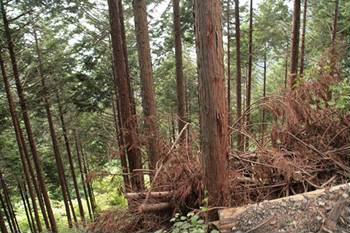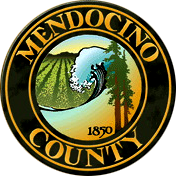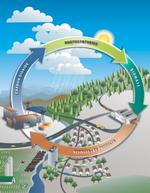Woody Biomass
What is Woody Biomass?
The term biomass most simply defined is the organic matter in trees, agricultural crops, and other living plant materials.
Woody biomass refers to trees, shrubs, bushes, or products derived from these woody plants that accumulate to an amount that is a hazard or disposal problem.
Check out the fact sheets below for more information.
Woody Biomass Factsheet #1 - What is it?
Biomass Feasibility in Mendocino County
In the early 2000's a Mendocino County Woody Biomass Working Group was formed with the mission to:
"Study the feasibility of utilizing woody biomass for energy production and economically viable value-added products by developing strategies for biomass projects that are consistent with community needs/values, that promote environmental health, and that strengthen our economy."
While the working group is no longer active, below you will find information on their work and the resources they produced.
Mendocino County Woody Biomass Working Group
Ecological Assessment of Biomass Thinning in Coastal Forests
Phase II- Pre and post-harvest stand assessment of woody biomass harvesting

create problems when it is not used."
Phil Giles, North Coast Resource Conservation and Development Council
One of Mendocino County's most valuable resources are its forests and the capacity to grow good timber. For our community to prosper, it makes economic sense to utilize this resource in a sustainable way. Woody biomass is a low value by-product of timber harvesting, bottom up thinning and other similar processes. Biomass is one of the few renewable resources that actually create problems when it is not used. Over population of small diameter trees negatively impact forest health and create fuel that feeds catastrophic forest fires. At the same time biomass is a carbon neutral, renewable resource that can potentially help replace dependence on fossil fuels for energy needs and promote economic stability in the region providing well-paid jobs and increasing the local tax base. Mendocino County has abundant biomass resources (see links below). These resources give our area a unique opportunity to both restore our forests and strengthen our economy in a way that promotes community health.
The Mendocino County Woody Biomass Working Group is examining how utilizing woody biomass leads to healthier forest, living wage jobs, reducing the risk of catastrophic fires while maintaining our visual landscape, preserving our air quality and regenerating our forests. The group is currently applying for grants to conduct a feasibility study that will look at several locations throughout Mendocino County and examine woody biomass availability, environmental and community characteristics of each location in order to determine the environmental, economic and social compatibility for a woody biomass facility. This information will be used as an educational tool to build community support for one or more biomass facilities in the region. The goal is that our feasibility study will encourage investment into woody biomass infrastructure in a way that is consistent with community values.
Who Are We
What is the Work of the Group
What are the Group’s Mission and Operating Principles
What is the Scope of our Feasibility Study
Frequently Asked Questions
Woody Biomass Resources
Educational Resources
California Biomass Energy Alliance
California Energy Commission - Waste to Energy & Biomass in California
National Renewable Energy Laboratory
The Watershed Center, Ca Statewide Wood Energy Team
National Association of Conservation Districts (NACD) Woody Biomass Desk Guide and Toolkit
U.S. Department of Energy Office of Energy Efficiency and Renewable Energy"s Biomass Program
Promoting Ecological Sustainability in Woody Biomass Harvest
Economic Social aspects of biomass facility
A Comparison of the Environmental Consequences of Power from Biomass Coal and Natural Gas
Net energy output from harvesting small-diameter t
Harvesting Guidelines
An Assessment of Biomass Harvesting Guidelines
Wisconsin's Forestland Woody Biomass Harvesting Guidelines
Biomass Harvesting Guidelines for Forestlands, Brushlands and Open Lands
Woody Biomass Harvesting for Managing Brushlands and Open Lands
Guidance on Harvesting Woody Biomass for Energy in Pennsylvania
County Studies
Fort Bragg Pre-feasibility Study
Fort Bragg Biomass Power Facility Feasibility Analysis
2006 County Feasibility Review Mendocino County
2006 Biomass Roadmap
Energy Technology
Biobrick Manufacture
Feedstock supply for planned bio-oil plant
Small Scale Biomass Refining
Bio Oil Midwest
Turboden Brochure Biomass Application
Biochar Can Be Carbon-Negative


